
Thomas Howard, 4th Duke of Norfolk, was an English nobleman and politician. He was a second cousin of Queen Elizabeth I through her maternal grandmother, and held many high offices during the earlier part of her reign.
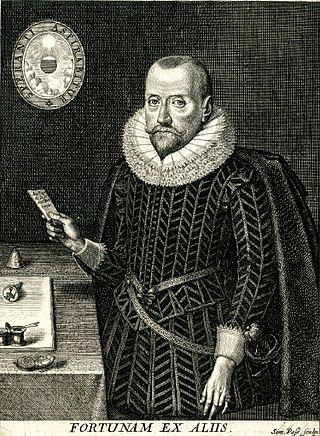
Sir Robert Naunton was an English writer and politician who sat in the House of Commons at various times between 1606 and 1626.

Francis Russell, 2nd Earl of Bedford, KG of Chenies in Buckinghamshire and of Bedford House in Exeter, Devon, was an English nobleman, soldier, and politician. He was a godfather to the Devon-born sailor Sir Francis Drake. He served as Lord Lieutenant of Devon (1584-5).
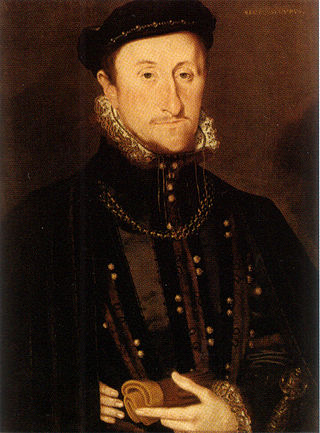
James Stewart, 1st Earl of Moray was a member of the House of Stewart as the illegitimate son of King James V of Scotland. A supporter of his half-sister Mary, Queen of Scots, he was the regent of Scotland for his half-nephew, the infant King James VI, from 1567 until his assassination in 1570. He was the first head of government to be assassinated with a firearm.
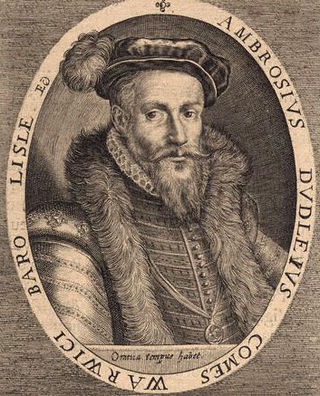
Ambrose Dudley, 3rd Earl of Warwick, KG was an English nobleman and general, and an elder brother of Queen Elizabeth I's favourite, Robert Dudley, Earl of Leicester. Their father was John Dudley, Duke of Northumberland, who led the English government from 1550–1553 under King Edward VI and unsuccessfully tried to establish Lady Jane Grey on the English throne after the King's death in July 1553. For his participation in this venture Ambrose Dudley was imprisoned in the Tower of London and condemned to death. Reprieved, his rehabilitation came after he fought for King Philip in the Battle of St. Quentin.
Edward Sutton, 4th Baron Dudley. The oldest son and heir of John Sutton, 3rd Baron Dudley. He was an English nobleman and soldier. Contemporary sources also refer to him as Sir Edward Dudley.
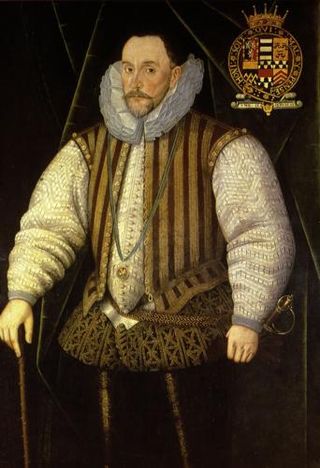
Henry Herbert, 2nd Earl of Pembroke, KG, KB was a Welsh nobleman, peer and politician of the Elizabethan era. He was the nephew of Catherine Parr, and brother-in-law of Lady Jane Grey, through his first wife.
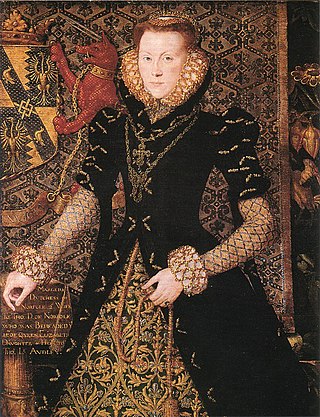
Margaret Howard, Duchess of Norfolk was the sole surviving child of Thomas Audley, 1st Baron Audley of Walden, and Lady Elizabeth Grey, herself the daughter of Thomas Grey, 2nd Marquess of Dorset, and his wife Margaret Wotton, therefore Margaret was a first cousin of Henry Grey, 1st Duke of Suffolk, father of Lady Jane Grey.
Thomas Randolph (1523–1590) was an English ambassador serving Elizabeth I of England. Most of his professional life he spent in Scotland at the courts of Mary, Queen of Scots, and her son James VI. While in Scotland, he was embroiled in marriage projects and several upheavals. In 1568-1569 he was sent on a special embassy to Russia, visiting the court of Ivan the Terrible.
Richard Forster (c.1546–1616) was an English physician.
William Flower (1497/98–1588) was an English Officer of Arms in the reigns of Henry VIII, Edward VI, Mary I and Elizabeth I. He rose to the rank of Norroy King of Arms, serving in that capacity from 1562 until his death in 1588.

Robert Glover was an English officer of arms, genealogist and antiquarian in the reign of Elizabeth I. In the College of Arms, he rose to the rank of Somerset Herald of Arms, serving in that capacity from 1571 until his death in 1588. As marshal and deputy to his father-in-law, William Flower, Norroy King of Arms, he participated in heraldic visitations throughout northern England.

Robert Cooke was an English Officer of Arms during the reign of Elizabeth I, who rose swiftly through the ranks of the College of Arms to Clarenceux King of Arms, serving in that office from 1567 until his death in 1592–3.

Lady Mary Sidney was a lady-in-waiting at the court of Elizabeth I, and the mother of Sir Philip Sidney and Mary Sidney Herbert, Countess of Pembroke. A daughter of John Dudley, Duke of Northumberland, she was marginally implicated in her father's attempt to place Lady Jane Grey on the English throne and affected by his attainder.
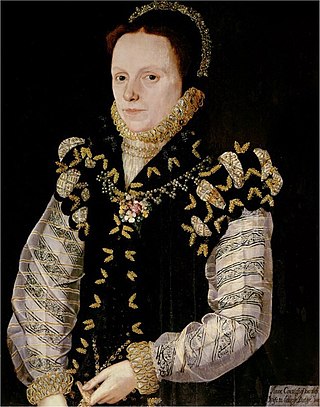
Anne Dudley, Countess of Warwick was an English noblewoman, and a lady-in-waiting and close friend of Elizabeth I. She was the third wife of Ambrose Dudley, 3rd Earl of Warwick.
Robert Bowyer was an English politician who sat in the House of Commons at various times between 1601 and 1610.

Sir William More, of Loseley, Surrey, was the son of Sir Christopher More. The great house at Loseley Park was built for him, which is still the residence of the More Molyneux family. Of Protestant sympathies, as Sheriff and Vice-Admiral of Surrey he was actively involved in local administration of the county of Surrey and in the enforcement of the Elizabethan religious settlement, and was a member of every Parliament during the reign of Queen Elizabeth I. He was the owner of property in the Blackfriars in which the first and second Blackfriars theatres were erected. He has been described as "the perfect Elizabethan country gentleman" on account of his impeccable character and his assiduity and efficiency of service.
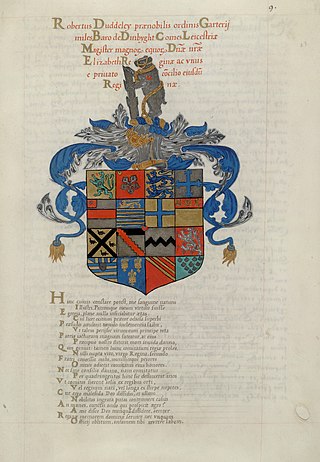
John de Beauchesne, also known as John de Beau Chesne, Jean de Beauchesne and Jehan de Beauchesne was a French Huguenot writing master and calligrapher. He relocated to London around 1565, in the reign of Elizabeth I. In 1570 he co-authored A Booke containing divers sortes of hands, the first writing manual published in English. He travelled to Italy and France, where he published additional writing manuals, returning to England by 1583. In his later years he was appointed writing master to two of the children of James I, Elizabeth and Charles. Beauchesne died in London in May 1620.

Henry Elsynge was a British parliamentary officer in the reigns of James I and Charles I. He served as Keeper of the Records in the Tower of London jointly with Robert Bowyer from 1604 to 1612, and was named to the office of Clerk of the Parliaments in 1621.














